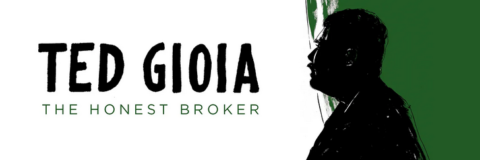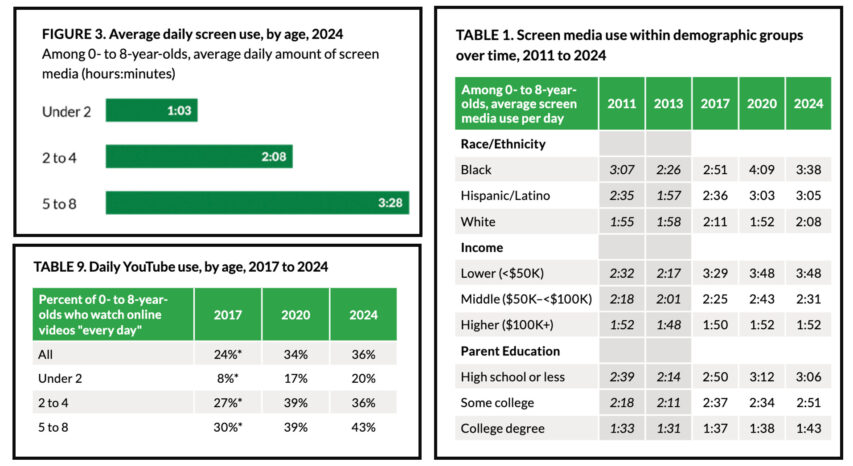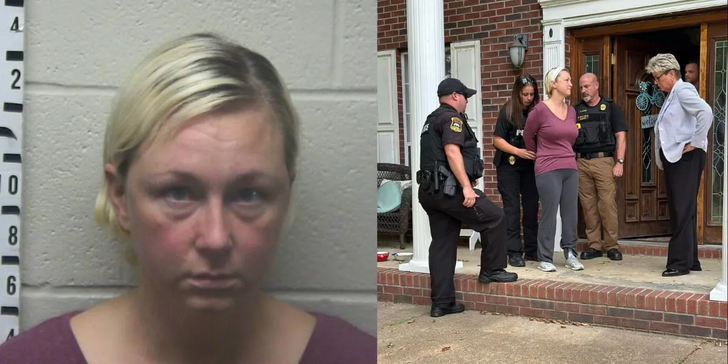“So how does it feel to be a human being now?” That wasn’t the question I expected to get from my aunt, the first time I saw her after my oldest kid was born. For starters she was a feminist, a prominent academic1 with several books to her name, and somebody who’d always struck me as mercilessly unsentimental. “Do you get it now?” she pressed on. “Before this your life was in shadow, it was fake. Now you’re in the sunlight, now it means something.”
She had kids, so despite having some ideological resistance to getting it, she got it. I got it too. It’s hard to describe what “it” is if you haven’t gotten it, but I’ll try to explain. The moment I first held my child, I had a vision of every human being who had ever done the same. I stood paralyzed, rooted to the spot while before my eyes a whole field of ancestors stretched back into the forgotten past, each cradling a baby just like I was doing. What was I without them? Nothing at all. A cosmic joke, a fluke, or a random collection of atoms. But with them, I was one stage of a process, a chapter of a story.
And not only that, but I was also no longer alone. It had always seemed to me that the problem of intersubjectivity could never be conquered, that between minds there yawned an unbridgeable epistemic chasm. Yet here was an experience that I shared with countless others from the most varied places and times, an experience I shared with emperors and with slaves. André Maurois once said: “Without a family, man, alone in the world, trembles with the cold”. I had always thought he meant this in a practical, or perhaps an emotional sense, but I now realized it was even truer cosmically. I had, as my aunt said, become a human being.
I didn’t just see the past. In that moment, the future also resolved itself into dreadful clarity. I had always known intellectually that someday I would die, and that the world would continue mostly as it had, but I never really believed it. Anything beyond the horizon delimited by my lifetime had been hazy and indistinct. Not anymore. Now I regarded the newborn squirming in my arms, and knew with absolute certainty that if things went well this child would bury me, and then continue living. Suddenly the far-future mattered, I had skin in the game now. I was no longer a temporal provincial, past and future both had an immediate and urgent reality, and I knew that I would never think the same way about them again.
John Psmith, “REVIEW: The Children of Men by P.D. James”, Mr. and Mrs. Psmith’s Bookshelf, 2023-04-17.
1. This was in the days before cancellation, I’ve often wondered since then whether she would have allowed herself to think the thought today.
2. It also caused me to wonder whether people without living descendants should be permitted any political representation at all.
March 29, 2025
QotD: Becoming a human being
March 24, 2025
Postcards from academia’s zombie apocalypse
Ted Gioia points out exactly why them there kids ain’t learnin’ no more:
[High school students] just care about the next fix — because that’s how addicts operate. They have no long term plan, just short term needs.
They can’t get back to their phones fast enough.
How bad is it for educators right now?
Check out this commentary from one experienced teacher, who finds more engaged students in prison than a college classroom.
This comes from Corey McCall, a member of The Honest Broker community who recently posted this comment:
I saw this decline in both reading ability and interest occur firsthand between 2006 and 2021 … I had experience teaching undergrads who hadn’t comprehended the material before, but hadn’t faced the challenge of students who could read it but who simply didn’t care …
Since 2021 I’ve been teaching part-time in prison, and incarcerated students really want to learn. They love to read and think along with authors such as Plato, Descartes, and Simone de Beauvoir. I am teaching Intro to Theater this semester (the story of how this happened is interesting, but is irrelevant here) and students have been poring over Oedipus the King and asking why this amazing play isn’t performed more regularly alongside plays like Hamilton and The Lion King.
I believe that there is hope for the humanities and perhaps for culture more generally, but it will be found in unusual places.
I’ve made a similar claim in this article — where I look outside of college for a rebirth of the humanities. It would be great if it happened in classrooms, too, but I fear that they are now the epicenter of the zombie wars.
Alas, I fear the number of zombie students is still growing — and at an accelerated pace.
Jonathan Haidt, who has taken the lead in exposing this crisis — and thus gets attacked fiercely by zombie apologists — shares horrifying trendlines from Monitoring the Future.
This group at the University of Michigan has studied student behavior since 1975. But what’s happening now is unprecedented.
Students are literally finding it too hard to think. So they can’t learn new things.
Below are more ugly numbers from another in-depth study — which looks at how children spend their day. It reveals that children under the age of two are already spending more than an hour per day on screens.
YouTube usage for this group has more than doubled in just four years.
Poor and marginalized communities are hurt the most. As your income drops, your children’s screen time more than doubles.
Source: 2025 study by Common Sense
In other words, these children are getting turned into screen addicts long before they enter the school system.
This is why teachers are speaking out. They see the fallout every day in their classrooms.
March 16, 2025
Female sexual predators
Every civilized person rejects the notion that male sexual predators should be tolerated, yet few are willing to accept the notion that female sexual predators might even exist. They absolutely do exist and they do commit terrible crimes against their — often very young — victims, as Janice Fiamengo shows:
Even when we are aware that women prey on children, many of us can’t really believe it. When Florida Congresswoman Anna Luna, a Republican elected to the U.S. House of Representatives, proposed three new bills last year that would impose harsh penalties, “including the death penalty”, for various forms of sexual abuse, child pornography, and child sexual exploitation, it is impossible to believe that Luna thought any number of women would be executed for child rape, and nor will they be given the leniency that is shown to women in the criminal justice system (see Sonja Starr’s research).
Yet similar crimes to Ma’s are easily discovered. In the same month that Ma pled guilty, a Martinsville, Indiana teacher was charged with three counts of sexual misconduct against a minor, a 15-year-old boy who has alleged that as many as ten other students were raped by the same woman. The month before that, a New Jersey primary school teacher was charged with aggravated sexual assault against a boy who was 13 years old when she bore his child; it is alleged that she began raping the boy when he was 11. The month before that, a Tipton County, Tennessee teacher [pictured below] pled guilty to a dozen sex crimes against children ranging in age from 12-17 years old. It is thought that she victimized a total of 21 children.
In the same month, a Montgomery, New York teacher pled guilty to criminal sexual assault of a 13 year old boy in her class, whom she assaulted over a period of months. In the previous month, a San Fernando Valley teacher was charged with sexual assault of a 13 year old male student; police believe she victimized others also. Earlier in the year, a substitute teacher in Decatur, Illinois was charged with raping an 11 year old boy. These are just a few recent cases, and only those involving female schoolteachers. Female predators are also to be found amongst social workers, juvenile detention officers, and sports coaches.
The feminist position on male sexual abuse of women and girls has for a long time been that it is about power. Men rape and abuse, according to Susan Brownmiller [quoted above] and others, because they believe it their right as men to keep women subordinate. Rape compensates for male inadequacy and allows for the expression of men’s hostility toward women: it is not about lust but about men’s need to humiliate and degrade. As Paul Elam once noted in a Regarding Men episode, the theory is fatally weakened if even a single woman does the same thing. Feminists have responded by saying that female sexual abuse is fundamentally different from male, less dangerous to society, less hurtful to its victims.
While I was doing research for this essay, I happened upon a recent podcast discussion between Louise Perry, British author of The Case Against the Sexual Revolution, and Meghan Murphy, Canadian Substack author and editor of Feminist Current. The podcast was called “What Happened to Feminism?” and I tuned in because I have enjoyed their perspectives on other issues.
Perry and Murphy are both critics of feminism who remain, as their conversation confirmed, staunchly feminist and anti-male. At one point in the podcast (at about 50:00), the conversation turned to #MeToo, and especially to allegations against teachers. Having already agreed that 95% of MeToo allegations were true, or at least based on something real, the pundits went on to agree, with disconcerting laughter, that there was no comparison between a “crazy” woman who “had sex” with a male student in her class, and a “dangerous” man, a “predatory rapist”, who went after under-age girls in his power.
Murphy even trotted out the old chestnut that abused boys were “stoked about the situation” in getting with “the hot teacher”. After all, she chuckled, “Men are gross predators. Men are perverts. They can’t keep it in their pants.” Perry, seeming taken aback by Murphy’s vulgarity, nonetheless agreed that the sexual abuse of boys is in an entirely different category from that of girls: “It is so annoying to me,” she said, “when people will go around claiming that these are exactly the same”.
Indifference to the victimization of boys, and lack of shame in admitting it, could hardly have been more stark. I mention the podcast not because it was singularly outrageous but because the attitudes expressed in it are still so much the norm, even amongst women who claim to have rethought other feminist beliefs.
March 1, 2025
“There were always scapegoats … and they were always driven out one way or another”
The second part of Nigel Biggar‘s look at the culture war in Britain includes a look at how the professional approach to young peoples’ gender issues became monomaniacal because nobody involved stopped to think for fear of being ostracized (or fired):
On the gender front, there’s plenty of reason to doubt the intellectual coherence of transgender-self-identification. When a biological male believes that his inner, authentic self is female, what exactly does he think being ‘female’ is? I’m still waiting for someone to persuade me that this doesn’t trade on gender stereotypes that feminists rightly taught us to throw overboard decades ago.
Observe how that has nothing at all to do with the care of patients, and how it has everything to do with the self-regard and political standing of the managers.
There’s even more reason to doubt that the well-being of young people is well served by taking their asserted genders at face value and allowing them to align their bodies by making irrevocable physical changes. According to Hannan Barnes’ shocking chronicle of the scandal at the Gender Identity Development Service (or GIDS) at the Tavistock Institute here in London, there was widespread doubt among clinicians about young people’s claims of “an inborn ‘trans’ nature”, awareness that these were sometimes correlated with eating disorders and self-harm, and suspicion that they might be caused by abuse or trauma. Furthermore, the long-term effects of using puberty-blockers were “largely unknown”, there was considerable uncertainty about which patients would benefit from them, and the health of some young patients actually seemed to worsen while on them.
Notwithstanding all this, “the clinical team … never discussed as a group what it even understood by the word ‘transgender'”, clinicians “never dream[t] of telling a young person that they weren’t trans”, and they always prescribed puberty-blockers unless the patient actively refused them. What’s more, expressions of doubt by staff were discouraged. “Someone would raise concerns, and someone else would move in to shut it down”, writes Barnes. “Those who persisted in asking difficult questions were not received well … those who spoke out were labelled troublemakers. [According to one witness,] ‘There were always scapegoats … and they were always driven out one way or another'”. “Junior staff looked on and learnt”.
Note the chilling effect.
Barnes’ book bears the title, Time to Think, because she identifies the general problem at GIDS as that of “not stopping to think”. That, of course, raises the question, Why? Barnes gives several reasons. One was the fact that the GIDS was propping up the Tavistock financially and that senior managers had a material interest in not disturbing its assumptions. Another was the unwillingness to offend transgender lobby groups such as Mermaids for “fear of a backlash”. But, most important of all was concern for the ‘progressive’ reputation of the management. According to David Bell, consultant adult psychiatrist at the Trust and whistleblower, “The senior management regarded [GIDS] as a star in our crown, because they saw it as a way of showing that we weren’t crusty old conservatives; that we were up with the game and cutting-edge. That was very important to the management to show we were like that”. Observe how that has nothing at all to do with the care of patients, and how it has everything to do with the self-regard and political standing of the managers. Not for the first time, the basic narcissism of progressive virtue-signaling is exposed.
Update: Added missing URL.
February 19, 2025
QotD: The inborn bias of all mankind
“I would strangle everyone in this room if it somehow prolonged my son’s life.” That’s what I blurted into a microphone during a panel discussion on ethics. I was laughing when I said it, but the priest sitting next to me turned sharply in horror and the communist sitting next to him raised her hand to her throat and stared daggers at me.
Why was I on a panel with a priest and a revolutionary communist? Long story — not very interesting: we were debating the future of ethics with special attention to the role of religion. The interesting part, however, is that at some point, after we all shook hands like adults and I was on my way home, I realized that I meant it — I would choke them all. Well, of course, one can’t be entirely sure that one’s actions will follow one’s intentions. The best-laid plans of mice and men, and all that. But, given some weird Twilight Zone scenario wherein all their deaths somehow saved my son’s life, I was at least hypothetically committed. The caveman intentions were definitely there.
The utilitarian demand — that I should always maximize the greatest good for the greatest number — had seemed reasonable to me in my 20s but made me laugh after my son was born. And my draconian bias is not just the testosterone-fueled excesses of the male psyche. Mothers can be aggressive lionesses when it comes to their offspring. While they are frequently held up as icons of selfless nurturing love, that’s mostly because we offspring — the ones holding them up as icons — are the lucky recipients of that biased love. Try getting between a mammal mother and her kid, and you will see natural bias at its brutal finest.
Stephen T. Asma, “Confucius Got It Right: Giving in to ‘Bias’ is Part of Living an Ethical Life”, Quillette, 2020-02-01.
January 26, 2025
Andrew Sullivan reluctantly welcomes Trump’s actions to undo Biden’s radical agenda
I have to admit that I didn’t expect to see Andrew Sullivan saying nice things about Donald Trump, and I’m sure it caused him much personal distress to have to write this:

A quick image search turns up plenty of examples of Presidents proudly showing off freshly signed documents. Usually these will be laws passed by the legislators but sometimes (especially in January 2025) it’s rule-by-decree on steroids.
To say I have conflicted feelings after a week or so of Trump’s return to power would be an understatement. Some of his early decisions remind me why I couldn’t vote for him. His decision to pardon even those among the J6 mob who assaulted cops jibes with his own instinctual love of vigilante justice against anyone in his way. That’s why his egregious withdrawal of security detail from John Bolton and Mike Pompeo is so instructive. Trump is no longer fond of these men, so he has all but invited a foreign hostile government to murder them. His embrace of anti-police vigilanteism at home is matched by his removal of sanctions on the violent settlers in the West Bank this week. He’s a thug who loves thugs.
But for all this, a large part of me is exhilarated by this first week. Yes, exhilarated. Liberated even. I wasn’t quite expecting this, but I can’t deny it. I suddenly feel more oxygen in the air as the woke authoritarianism of the last four years begins finally to lift. And let me put the core reason for this exhilaration as simply as I can. On the central questions of immigration and identity politics, what Trump is proposing is simply a return to common sense — a reflection of the sane views of the vast majority of Americans, who support secure borders and oppose unfairness in sports and medical experiments on children. My conservative soul is glad.
Joe Biden brazenly lied when he promised moderation in 2020. Check out my column on his initial flurry of executive orders four years ago this week:
[Biden] is doubling down on the very policies that made a Trump presidency possible. In every major democracy, mass immigration has empowered the far right. Instead of easing white panic about changing demographics, Biden just intensified it.
All Trump had to do was wait. But Biden’s EOs on “equity” were even more extreme, effectively ending any pretense of color-blindness in American law and society. Biden, I wrote four years ago, was:
enforcing the Ibram X. Kendi view that “the only remedy to past discrimination is present discrimination”. And he’s enforcing it across the entire federal government and any institution the federal government funds.
It was a direct and proud embrace of systemic race and sex discrimination by the federal government. It was accompanied by a massive shift in the private sector toward illegal race and sex discrimination in hiring, firing, and promotion. This was buttressed by actual mandatory workplace indoctrination in critical race, gender, and queer theory. This was authoritarian brainwashing, accompanied by blatant race discrimination.
Biden also decreed by executive order that the postmodern notion of “gender” would henceforth replace biological sex in determining who is a man or a woman. He mandated that any school or university getting federal funds should remove distinctions between boys and girls — even in sports and intimate spaces. His administration fully backed the medically irreversible transing of children with gender dysphoria, lied about the science, and secretly urged removing all age restrictions on transition — subjecting countless gay and autistic children to the permanent destruction of their future ability to have kids or even an orgasm.
Biden was, in these respects, an unremitting extremist; and almost all Trump is doing this week is unraveling this insanity. The one actually radical act from Trump is rescinding LBJ’s “affirmative action” directive of 1965. Reagan wanted to do this, but he faced bipartisan opposition. One justification of the feds moving from anti-discrimination to being pro-discrimination was because, in LBJ’s words, African-Americans “don’t have their 12 percent” in federal employment, i.e. their proportion in the country at large. Today, African-Americans are almost 19 percent of federal employees — much higher than their population share. The MSM won’t frame it this way. But that’s the truth. And Trump’s EO language suggests he now has a staff shrewd and determined enough to push back. This week was more regime change than shit-show.
It is, however, far too soon to declare the war on left authoritarianism over. It is far from dead; it has replaced Christianity entirely for many, as we saw with Bishop Budde at the National Cathedral this week, or the Oscars giving an unpopular film 13 nominations just so they can give a Best Actress award to a biological man. The Ivy League will do everything it can to keep discriminating against members of “oppressor classes.” The MSM is too far gone to reform itself. If you want proof of that, notice that the NYT has two emphatically “queer” columnists pushing gender woo-woo, and it just fired the only writer in that publication, Pamela Paul, who helped expose the medically baseless transing of children.
Not only will the Trump EOs end the systemic racism in the federal government and its contractors, his people are also aware of attempts to foil color-blindness by their own woke bureaucrats, and will be vigilant. More importantly, the new administration will deploy the DOJ to restore equality of opportunity in the private sector. After so many major corporations have been openly bragging about their race and sex discrimination these past few years, they sure have been asking for it.
January 14, 2025
Andrew Sullivan on the “grooming gangs” scandal in Britain
These rape gangs have been operating for more than a decade in English towns and cities yet the government does everything it possibly can to avoid taking action, for fear of being accused of racism (or perhaps fear of what they’d discover if they did properly investigate) and losing all those Muslim votes:
The first response of most human beings to news of irredeemably evil acts is to ask who committed them. And if the answer makes us deeply uncomfortable, we tend to move on pronto. You see this most obviously on social media with news of an atrocity. Was the shooter white, a Democrat, a Republican, Muslim, MAGA, woke, trans? And where did the victim fit into these categories?
Our priors instantly color our moral judgment, and even our sense of the seriousness of the offense. And the temptation simply to deny what seems to be in front of our nose can be overwhelming.
[…]
The more intense the horror, the more powerful the instinct to doubt when you first hear of it. The sex-abuse scandal in my own church first numbed and incapacitated me. It took some time for me to see the totality of what had happened, and how deeply it had destroyed Catholic moral authority. Again, when I first read about, say, the Catholic school for deaf children where a priest had picked his victims among those whose parents did not know sign language, the feeling of horror was almost too much to process at all. And as with the Bush administration’s torture policy, it took even more time to grasp how this moral rot had been enabled by the very top.
This is why, I think, the scandal of Britain’s Pakistani rape-gangs, and the institutional negligence toward tens of thousands of underage victims over several years, has had a second burst of life. A serious national inquiry on the scandal was conducted years ago (its recommendations not yet implemented). But several towns with the worst records were omitted from that inquiry; and the sheer scale and depravity of what happened has finally begun to sink in. The precipitant was Elon Musk pontificating about the scandal on X, as part of his campaign to bring down Keir Starmer.
The details are hard to absorb. Think of the hideous abuse suffered by that extraordinary French woman, Gisèle Pelicot, sedated and raped by dozens of French men, organized by her husband. Now think of that kind of organized gang-bang — but make it close to ubiquitous in some towns and the victims under-age girls: raped, brutalized, mutilated, beaten, their lives destroyed. Yes, it was that bad. Tens of thousands of rape victims across the country. This is how one British judge addressed some culprits at sentencing:
You coerced her into providing sex to vast numbers of strangers. Up to four or five men would be invited to addresses so they could have sex with her … Threats were made to kill her … If she resisted, she would be coerced. Customers would become angry … If oral sex was required, her head would be pushed down, her hair pulled and she would be slapped. Strangers would burn her with cigarettes. A stranger almost throttled her. One deliberately scratched her vagina with his nails. One inserted a hairbrush into her vagina.
The victim was just 13 years old. And she wasn’t unconscious. In just one town, a “conservative estimate is that approximately 1,400 children were sexually exploited” between 1997 and 2013. And in communities dominated by men of Pakistani origin, largely from the Mirpuri region of Kashmir, who held huge sway over the police and local community — just like the Catholic Church in Boston — cover-ups were routine.
Among the abuse concealed: gang-rapes of a single minor by 20 men; putting a pump into a girl’s anus so more men could penetrate her at once; and constant threats of murder of the girls or their families if anyone spoke up. In one case, a minor was arrested and charged with prostitution for having oral sex in a car with a john. When she attended her trial, she discovered that the magistrate in charge of her case was the man she’d fellated. No one knows the full number of minor girls affected, but it is in at least the tens of thousands, and possibly in the six figures.
Why was this allowed to go on for so long? For the same reason the Catholic Church covered up child rape for decades, and Dick Cheney covered up torture. Because the orthodoxies of Catholicism, of the American military, and, in this case, the multicultural experiment were respectively involved. These orthodoxies were sacred, their cultural power extreme. Catholic Boston, conservative America, and elite liberal Britain therefore defended their own orthodoxies for a very long time. And with every successful deflection of responsibility, the number of victims increased.
The truth damns the multicultural project in Britain. Rather than integrating these men of Pakistani heritage, insisting that they adopt the laws and mores of the native population, and treating them like everyone else, the UK elites celebrated cultural difference, enabled the siloing of these populations, bemoaned their own white working-class populations, and forbade any criticism of Islam. So if you called out this stuff, you were instantly called racist. After all, to accuse a non-white minority of raping white girls was a trope right out of white-supremacist fever dreams. And yes, it is a hideous racist trope — from the depths of the American South. But sometimes the trope is the truth.
In all the major cases, I’ve found no reported evidence of Pakistani or Muslim girls being groomed and raped — only poor, white natives. The justification among the rapists, moreover, was that these non-Muslims were sluts who were asking for it and beneath contempt. Racist insults were common as these girls were brutally abused. These were not just rapes, but hate crimes of a grisly sort.
January 11, 2025
Euphemizing organized gang rapes of children as “grooming” won’t work much longer
It’s possible that the current upswell of anger about the decade-long cover-up of organized child rape gangs in English towns and cities may come to nothing … or it could result in a complete breakdown of law and order:

Like professional basketball, those accused of being members of “grooming gangs” tend to be monocultural.
The grooming gang thing has really blown up in the past couple of weeks. I’m not sure wholly why myself but a couple of guesses.
One is that the media really couldn’t report all that much — and for the same reason that Tommy Robinson got jailed one time around. Because there have been multiple ongoing cases and full reporting of one could — and probably would too — prejudice a jury in subsequent cases. So, those ongoing cases mean that the subject is more or less sub judice and can’t, in volume or detail, be talked about.
Thus things like Guardian reporting. Where you get the news that a gang has been tried, found guilty, sent off to jail. And no comment on who they were. Well, except for a list of names all of which are, shall we say, less than Anglo Saxon or even Viking in origin. We all draw our own conclusions at that point.
[…]
The number of abused — which means children raped, recall, arses blown up with pumps so that adult dicks can multiply penetrate to be detailed — starts to be counted up into the thousands. The tens of thousands perhaps.
There’s a point there at which I don’t think that normal societal agreement to allow the authorities to handle things works any more. At some point along that spectrum then significant civil violence breaks out.
Which brings me to the two questions. What is that number which, when known, leads to actual riots? And no, I don’t mean 15 meatheads lobbing half bricks at the police. Actual real and sustained loss of civilian authority control. The second, obviously, is are we going to reach that number?
In short, what is the level of betrayal of these girls that leaves the mob triumphant over law and order?
What really worries me is that I have a horrible — even if still slight at this point — suspicion that there was enough vileness done to enough young girls that we’re going to find out.
On Substack, Francis Turner shares concerns about the mass rapes of children and young women over too many years:
The scandal has been going on for at least 25 years and probably a decade more. That means that every year around 1000 new girls have been gang raped by the gangs.
Every year around 1000 new girls have been gang raped by the gangs
There are roughly 300,000 girls of each year cohort in the UK so that means one in around 300 girls of any age group has been gang-raped. Given that there are large chunks of the UK which are not places where the ~50 identified rape gangs have operated and indeed are places without residents of the relevant ethnicity (primarily Pakistani and Somali in a couple of cases) that means that the number goes way up in those areas. It seems likely that in one those 50 areas the ratio of new victims to their year group is more like 1 in 100 or 1%, especially when you remove the Pakistani girls that probably weren’t targeted even if some of them were in fact abused at home.
In places like Telford if you see a school year group photo for any year in a Comprehensive school in the last 30+ years at least one of the girls in that photo was being gang-raped
If successful steps had been taken in ~2010 to stop the abuse then about 15,000 girls would not have been gang-raped.
The Tory party and civil service disgust of Tommy Robinson has had the result that about 5000 girls were gang raped between when Tommy Robinson started going about the issue in around 2018 and 2023 when Sunak finally set up the national Grooming Gangs Taskforce.
If Substack would let me do a table this would be easier. However here is a summary of girls gang-raped under the prime ministers of this century based on a simple linear model
Starmer: 500 (to date)
Sunak: 1700
Truss: <100
Johnson: 3000+
May: 3000
Cameron: 6000+
Brown: 3000-
Blair: 10,000Probably half of Blair’s 10,000 was before anyone was aware that this was a systemic problem, but it was known to be a potential problem by at least 2004 when
[a] Channel 4 documentary about claims young white girls in Bradford were being groomed for sex by Asian abusers is delayed as police forces warn it could inflame racial tensions. It was finally shown three months later.
If the UK had got serious about stopping grooming gangs back in 2004 then over half of the gang rape victims could have been saved from such a terrible experience.
Take that 35,000 number a different way. There are roughly 35 million women in the UK. So one in a 1000 women in the UK have been gang-raped over the decades.
January 5, 2025
“Everything humans build starts with human and social capital. This includes everything economic.”
Lorenzo Warby explains why he has always disagreed with the “standard model” of economic growth, as it fails to include the biggest cultural variables that matter enormously for economic development:

“Hyderabad bazaar” by ruffin_ready is licensed under CC BY 2.0 .
The seminal theory of economic growth is the Solow Growth Model (technically, the Solow-Swan model). The model can be easily expressed mathematically.
I have never liked the model, nor its later variations.1 The intuition behind my dislike was that societies — and indeed different ethnic groups within societies — obviously varied enormously in their capacity to use, to “put together”, the factors of production. They also vary enormously in their capacity to generate factors of production: specifically capital, the produced means of production. The model implies that there will be a general convergence between economies that has not happened.
Updating the model by including human capital was a gesture in that direction but did not fix the problem with the model, which is much more basic. The update attempted to grapple with the failure of investment to flow to poorer countries and, by implication, the long-term, systematic failures of foreign aid. The failures of foreign [aid] also supported my intuition.
The most recent (2024) Nobel memorial was for work that also directly supports my intuition — how much institutions matter for economic growth. The long-term economic growth literature — identifying culture as very much mattering for economic growth — also supports my intuition.
Skills and knowledge (human capital) are basic
To explain why the entire approach — basically, fiddling with some version of the Cobb-Douglas production function — is fundamentally mistaken, we need to go back to the origins of human economic growth. I mean, right back — all the way to foragers.
What are the original forms of capital? Well, there are tools, which are the original form of physical capital. But without the skills to make and use the tools, they either do not exist, or they are useless.
So, we start with skills and knowledge, with human capital. It takes almost 20 years to train a young human forager to be a subsistence adult — that is, to forage as much nutrition as they consume. The need to stuff the human brain with skills and knowledge — and the need to grow a brain that can be so stuffed — is why we have the most biologically expensive children in the biosphere. The need to impart skills to biologically expensive children is fundamental to the dynamics of all human societies.
Human capital — skills and knowledge — is not an “add on”. It is basic.
So are social connections (social capital)
Foragers do not live as atomistic individuals. They live in families and (fluid) foraging bands. Families and foraging bands are vehicles for our highly cooperative subsistence and reproduction strategies.
That we are the tool-making and tool-using species lacking tearing teeth and claws with the most biologically expensive offspring is why we have highly cooperative subsistence and reproduction strategies. It is also why we are so much the normative species — enabling robust cooperation based on convergent expectations — and why we have prestige and propriety as forms of status.
Both these forms of status represent currencies of cooperation. Prestige grants people status for doing things which are risky, clever, hard, entertaining. It is status by conspicuous competence. It provides a way to reward people for engaging in activities which generate wider social benefits — what economists call positive externalities. It also encourages people to want to associate with you.2
The other form of status — propriety — grants status to those who uphold the norms of the group. In particular, it wields stigma against those deemed to have violated those norms. It provides a way to punish people for engaging in activities which generate wider social costs — what economists call negative externalities. It helps solve the free-rider problem regarding the effort to enforce norms.
Reversing (i.e. perverting) status patterns so that people get prestige from victimhood — extending to various forms of failures of competence or even wildly anti-social behaviour — while stigmatising people who conspicuously successful (as oppressors or exploiters) is deeply destructive of human flourishing.3 We can see this pattern currently operating in “progressive” US states, and especially cities, but murderous versions of it operated in various Communist states. These things affect economic activity, but cannot be discerned by a Cobb-Douglas production function.
It is not true that scientists have never discovered Homo economicus. Unfortunately, Homo economicus is not a member of genus Homo. It is Pan troglodytes (chimpanzees) playing strategy games in a lab. It is precisely because we Homo sapiens are more normative, allowing us to encapsulate the social conquest of the Earth, that there are billions of us and only a few thousand of them.
We — as a highly social, indeed ultra-social, species — engage in both individual and social calculations. Different cultures notoriously generate different patterns for, and balances between, such calculations.
1. The model has some utility for short-term calculations of growth.
2. As with any social benefit, the knock-on dynamics of prestige can be complex, but status from conspicuous competence is at the heart of it.
3. The November 2014 Shirtgate controversy — where a rocket scientist who had led the technically incredibly difficult task of landing a probe on a comet was publicly humiliated over the shirt he wore (a gift from a female friend it turned out) — represented conspicuous achievement (prestige) being trumped by feminist stigmatisation (propriety).
December 15, 2024
QotD: Elite luxury beliefs – cultivated non-disgust
Then there is the acceptance of what can only be described as unconventional lifestyles. Gay rainbow gender-bending madness is one thing. It seems progressive. Sodomites used to get ten years of hard labour. Look how advanced we have become.
But now they’ve moved on to the kids. It is easy to believe a listless, drug-addled elite might indulge in sexual degeneracy just for the hell of it. But how do we explain kindergarten teachers teaching their pupils about pronouns? Doctors emotionally blackmailing parents by insisting that the alternative to mutilating their children is their suicides? Or civil servants quietly putting gender-neutral bathrooms in public spaces?
How do we explain any of this? How do we even explain the emergence of transgenderism at all? There have been transexuals and gender dysphorics throughout history. They were typically understood as an offshoot of homosexuality, the extreme end of the effeminacy spectrum, and a vanishingly small fraction of the population.
But the current contagion is unusual and is clearly artificial. Its scale can only be a result of active promotion. Much of that is accomplished via the media and fellow travellers who champion these activities. But it is helped along by a collection of other professionals, and any attempt to question it is met with energetic pushback.
It is apparent that much of this comes from on-high, a literal top-down initiative. In less than twenty years we have witnessed a journey that began with gay rights and now includes active promotion of sexual deviancy to children, none of it natural or wanted by the majority. There is lots of speculation as to why this may be, including the part it may play in a comprehensive depopulation agenda.
What is apparent is that the professional class who endorse and promote this perceive it as an exercise in tolerance.
The notion of tolerance has typically been invoked for the distasteful, a last line of defence when direct measures fail, not a behavioural response indicating sophistication.
We rely on tolerance for things we dislike but cannot avoid. We learn to tolerate a persistent whine from an air conditioning unit, a noisy neighbour, or a noxious smell. But our goal is always to remove the source of the problem. Tolerance is a stopgap only when more permanent solutions are absent.
Their belief that tolerance is a virtue is one of the greatest shortcomings of today’s chattering classes. It is exactly the kind of signal error that exemplifies the disconnect between globalist elites and their obedient cheerleaders. The mechanism here seems to be a kind of learned override to natural disgust or discomfort. When others then object to whatever letter they have just added to the LGBTQWERTY+ community on the basis that it can’t be healthy or normal to endorse this stuff, that learned response includes the flare of superiority at your obvious backwardness.
How satisfying it must feel to have your natural inclination toward superiority endorsed in this way. Like whole food vegans at a Medieval banquet, it must provide an irresistible sense of smugness to know that you are the one-eyed man in the rainbow-decked land of the blind, with the uneducated hopelessly lost in their backward understanding of the benefits of sexual liberation.
While elites and their public relations machine happily endorse this misplaced emphasis on tolerance, all evidence suggests the elites themselves are not tolerating anything, despite what their obedient minions may think. They really are indulging in the cocaine-fuelled all-star human sacrifice orgies for real because they are cosmically bored and rich.
They aren’t rising above intrinsic disgust responses, they have sexualized them. They seem to have fetishized everything we consider unacceptable. Trafficked kids, femboys, chicks with dicks, gangbangs, farmyard orgies, human sacrifice, the lot.
They may even experience a thrill in seeing just how far they can push public morality as many have suggested, and especially how far they can get otherwise normal middle-class people to champion deviancy and hedonism most cultures find distasteful enough to ban.
The excessive promotion of tolerance is a defence against unnatural practices bored elites are rumoured to engage in. The professional class, for all their faults, probably aren’t into human sacrifice or animal orgies. So their response is to elevate the importance of visible acceptance of alternative lifestyles, hence gay kids, castrated boys, invented genders and other absurdities they cannot possibly believe themselves, and all of it instantly conveyed to one’s peers with nothing more than a multicoloured flag.
To top it all when they see how normals react, those unmoved by inept calls to be more understanding about sexual abuse, when they see parents reach for the shotgun at the very idea of sexually mutilating children, they get to invoke the conjoined twin of their cultivated tolerance, namely artificial superiority. The deep belief that they see further than the yokels with their primitive instinct to actually protect the vulnerable and embrace some basic sense of public morality.
These absurd beliefs can be observed in our educated classes because they ostentatiously demonstrate tolerance and its newfound position as the supreme virtue of the post-Christian age, one of the most successful public relations campaigns ever run by elites.
Spaceman Spiff (guest-post) “Praying to Absent Gods”, Postcards from Barsoom, 2024-07-16.
December 12, 2024
The dispiriting rise of the “kidult”
Freya India explains the need for modern parents to re-embrace some of the more traditional duties of parents in raising children:
It’s pretty much accepted as fact that parents today are overprotective. We worry about helicopter parenting, and the coddling of Gen Z. But I don’t think that’s the full story. Parents aren’t protective enough.
Or at least, what parents are protective about has changed. They are overprotective about physical safety, terrified of accidents and injuries. But are they protective by giving guidance? Involved in their children’s character development? Protective by raising boys to be respectful, by guiding girls away from bad influences? Protective by showing children how to behave, by being an example?
As far as I can see many parents today are overprotective but also strangely permissive. They hesitate to give advice or get involved, afraid of seeming controlling or outdated. They obsess over protecting their children physically, but have little interest in guiding them morally. They care more about their children’s safety than their character. Protective parenting once meant caring about who your daughter dated, the decisions she made, and guiding her in a good direction. Now it just means preventing injury. And so children today are deprived of the most fundamental protection: the passing down of morals, principles, and a framework for life.
One obvious example of this is that adults act like children now. They talk like teenagers. They use the same social media platforms, play the same video games, listen to the same music. Our world moves too rapidly to retain any wisdom, denying parents the chance to pass anything down or be taken seriously, so they try to keep up with kids, who know more about the world than they do. Fathers are “girl dads” who get told what to think. Mothers are best friends to gossip with. The difference between childhood and adulthood is disappearing, and with it, parental protection.
Beyond that, too, there’s this broader cultural message that adults should focus on their own autonomy and self-actualisation. This very modern belief that a good life means maximum freedom, with as little discomfort and constraint as possible, the way children think. Now nothing should hold adults back. They have a right to feel good, at all times. They stopped being role models of responsibility and became vessels of the only culture left, a therapeutic culture, where it’s only acceptable to be protective of one thing, your own mental health and happiness. Listen to the way adults judge decisions now, how they justify themselves. Parents are celebrated for leaving their families because they were vaguely unhappy or felt they needed to find themselves, even at the expense of their children’s security. Adults talk about finding themselves as much as teenagers do. Parents complain online about the “emotional labour” of caring for family, or express regret for even having children because they got in the way of their goals. Once growing up meant sacrificing for family, giving up some of yourself, that was an honour, that was a privilege, and in that sacrifice you found actual fulfilment, broke free from yourself, moved on from adolescent anxieties, and there, then, you became an adult.
But slowly, without thinking, we became suspicious of adulthood. We debunked every marker and milestone, from marriage to children all the way to adulthood itself. Now we aren’t just refusing to grow up but rejecting the very concept of it. Adulthood does not exist, apparently. It’s a scam, a lie, a myth. Adulthood is a marketing ploy, we say, while wearing Harry Potter merch and going to Disneyland. Adulthood is a performance, apparently, that’s going out of style. “There is nothing, there is nobody which/who would really justify the claim ‘you have to grow up’,” seems to be the sentiment. “For whom? for what?”
November 27, 2024
Scolianormativity
At FEE, Michael Strong defines the neologism and provides evidence that it has been a long-term harm to children forced into the Prussian-originated school regimentation regime:
Scolianormative (adj.): The assumption that behaviors defined by institutionalized schooling are “normal”. An assumption that became pervasive in industrialized societies in which institutionalized schooling became the norm that resulted in marginalizing and harming millions of children. Once society began to question scolianormativity, gradually people began to realize that the norms set by institutionalized schooling were perfectly arbitrary. It turned out that it was not necessary to harm children. The institutions that led to such widespread harms were dismantled, and humanity transcended the terrible century of institutionalized schooling.
The conventional educational model, government-enforced and subsidized, is based on 13 years of schooling consisting of state-defined curriculum standards and exams leading to a high school diploma.
Young human beings are judged as either “normal” or not based on the extent to which they are “on track” with respect to grade level exams and test scores. Students who are not making the expected progress may be diagnosed with learning differences (formerly known as disabilities). Students who can’t sit still adequately may be diagnosed with ADD/ADHD. Students who find the experience soul-killing may be diagnosed with depression or anxiety. Students who can’t stand to be told what to do all day may be diagnosed with Oppositional Defiant Disorder (ODD). Students who score higher on certain tests are labeled “gifted”.
Massive amounts of research and institutional authority have been invested in these and other diagnoses. When a child is not progressing appropriately in the system, the child is often sent to specialists who then perform the diagnosis. When appropriate, then the child is given some combination of medication, accommodations, and/or sent to a special program for children with “special needs”.
Many well-intentioned people regard this system as life-saving for the children who might otherwise have “not had their needs met” in the absence of such a diagnosis and intervention. And this is no doubt often true, but our fixation on scolianormativity blinds us to the fact that an entirely different perspective might actually result in better lives for more children.
How could one possibly deny mountains of evidence on behalf of such a life-saving system?
Scolianormativity
The Prussian school model, a state-led model devoted to nationalism, is only about two hundred years old. For much of its first century it was limited to a few hours per day, for a few months per year, for a few years of schooling. It has only gradually grown to encompass most of a child’s waking hours for nine months a year from ages 5 to 18. Indeed, in the U.S., it was only in the 1950s that a majority of children graduated from high school (though laws requiring compulsory attendance through age 16 had been passed in the late 19th and early 20th century). In addition, for most of its first century, it was far more flexible than it has become in its second. The increasing standardization and bureaucratization of childhood is a remarkably recent phenomenon in historical terms.
In his book Seeing Like a State, the political scientist James C. Scott documents how governments work to create societies that are “legible”, that can be perceived and managed by the state to suit the needs of the state’s bureaucrats and political leaders. Public schools are one of the most pervasive of all state institutions. The structure of public schooling has grown to suit the needs of the state bureaucrats who monitor it.
November 19, 2024
“Sometimes, a bouncy castle is just a bouncy castle”
From Donna Laframboise at Thank You, Truckers!, part of the story of the bouncy castles during the Freedom Convoy protests in Ottawa in 2022:
More than two years after the trucker protest ended, Bianca says the COVID era was clarifying. “It opened my mind to what we need to do — and what we don’t need to do.” In her view, childhoods are precious and fleeting. Society should have gone to greater lengths, she feels, to insulate children from pandemic panic and fear. “The kids don’t need that. They just need to be kids.”
[…]
Other than a brief conversation with TVA — a Quebec French-language television station — Bianca says no one from the media spoke to her.
How do we explain this profound lack of curiosity? A young mother inflated bouncy castles that were wholly impossible to miss. Mere steps from the National Press Building. Two weekends in a row. (Smaller inflatables sometimes put in an appearance mid-week.)
Several journalists commented on the bouncy castles. But no one reported Bianca’s story. No one tried to understand.
[…]
Many people instantly grasped the outsized, symbolic significance of the inflatables. “I will never get tired of seeing videos with the bouncy castles in them,” one person tweeted. “It just crumbles the false narrative …”
But “the mainstream media told us the trucker rally was all hate and violence,” someone else pointed out facetiously, while another chimed in: “Those fringe extremists ruining Canada with their happiness and joy.”
If the flag of Canada is ever changed, still another added, the maple leaf should be replaced with a red bouncy castle.
“I absolutely love the tactic” (italics here and below by me), someone else tweeted. “It’s peaceful, family oriented, and gives the Politicians the finger at the same time. Mayor Watson was near tears on CTV today.”
Many people — both sympathetic and hostile to the protest — talked about the bouncy castles as if they were part of a pre-determined plan, dreamt up by a mastermind. According to one individual, the “bouncy castle is probably one of the greatest strategic moves against any government lusting for violence in the history of war strategies“.
Another described the inflatables as “one of the finest information warfare tactics I’ve seen to date”. In the opinion of someone else, “The bouncy castles are the unsung heroes of the protest. The government doesn’t dare send in the tanks or snipers while children are playing in bouncy castles. The optics would be horrific.”
Thomas Juneau, a University of Ottawa professor who specializes in Middle Eastern politics, confidently told the world: “Just to be clear, the bouncy castle was an info op, and more than a few gullible commentators fell for it”. In the universe inhabited by our pompous professor, no evidence is actually required. According to someone else, the presence of bouncy castles pointed to “a sophistication of terrorists”.
On the Monday following the first bouncy castle weekend, someone said the inflatables had disappeared because the “bouncy castle guy” had to report to work. Ten days later, someone else claimed the bouncy castle (singular) had exited the stage because those responsible “are hoping to get their deposit back on it so they can afford the bus fare back to Alberta”.
But the facts in this matter are straightforward. The Freedom Convoy story is about ordinary people who did extraordinary things. Bianca of the Bouncy Castles was one of those people. A mom who cared about the kids. A resident of Quebec who lived three hours distant. An event planner who knows how to make things happen.
There’s nothing covert or complicated here. Sometimes, a bouncy castle is just a bouncy castle.
October 31, 2024
Nine Types of Trick-or-Treat Houses
It’s a Southern Thing
Published Oct 23, 2018Halloween is coming. Which one will you be?
#SoTrueYall #itsasouthernthing















